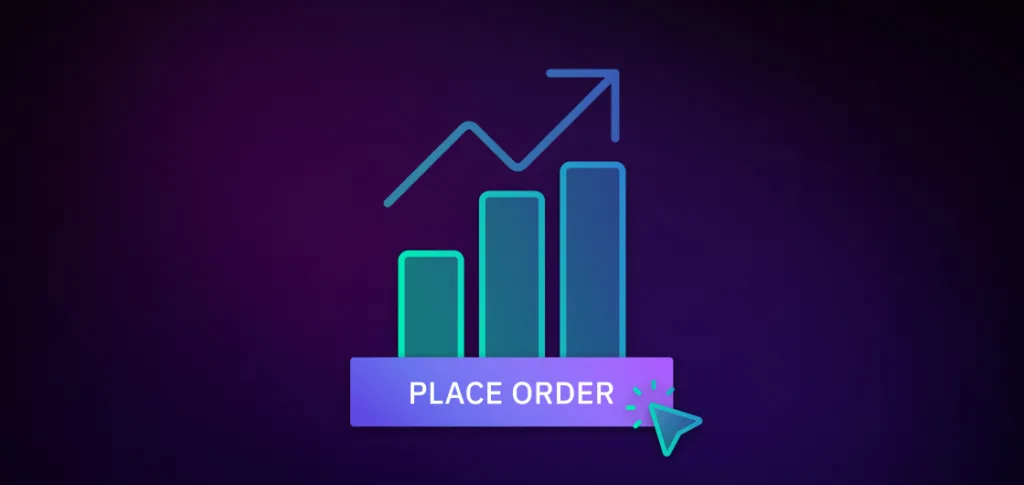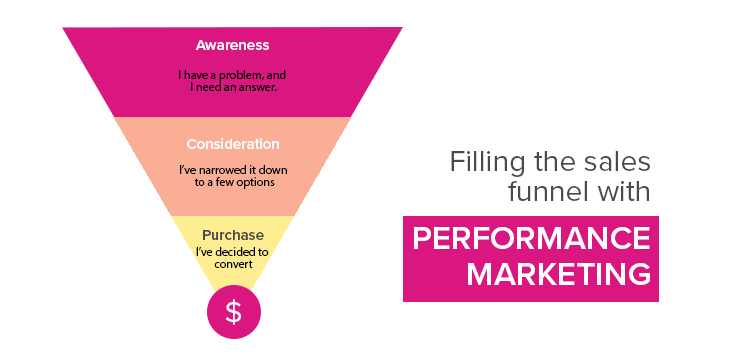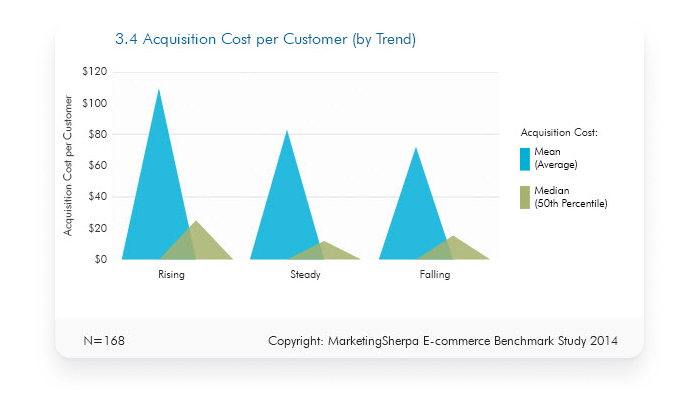
- Ecommerce Marketing
- Reviews and UGC
12 Ecommerce Growth Strategies to Maximize Sales in 2024
Megan Wenzl | Apr 23, 2024
Nov 17, 2021 | 7 minute read

Matt Goodman
Co-founder, CEO
Marketers are always on the hunt for cost effective ways to bring in new customers. As customer journeys become more complex, the number of touch points and channels required to reach these customers continues to rise — not to mention the increasing price for acquisition.
Even before the ecommerce shift in 2020, acquiring new customers was difficult (and expensive, especially during peak times) — now with a larger pool of competition, it hasn’t become any easier.
One increasingly popular strategy brands are adding to their marketing is performance marketing. In this article, we’ll explore why employing a performance marketing strategy may be the next step to give you that extra edge from the rest of the competition.
If you’re a fan of dictionary definitions, the Performance Marketing Association defines performance marketing as “online marketing and advertising programs in which advertisers pay marketing companies when a specific action is completed, such as a sale, lead, or click.”
Simply put, this means, as a brand or retailer, you’re not paying unless a specific action is taken.
Traditional advertising models will have you paying upfront for impressions, clicks, and engagements that you hope will lead to sales. Performance marketing allows you to have a little more control over your ROI.
Merchants who are ready to scale will find the flexibility of headless commerce much more conducive to their goals than the rigidity of traditional ecommerce. Here are the biggest advantages of going headless:
Affiliate Marketing
The most common form of performance is affiliate marketing. Affiliate sites can be desirable options to increase your revenue with little work and grant access to very specific niches.Overall, there are many other avenues to explore this style of marketing in order to round out a full fledged performance strategy. From performance agencies to SaaS platforms that use a well rounded ecosystem to generate sales and only pay on performance.
These benefits and more come together to form a viable risk-averse option, generally at a lower cost — especially for customer acquisition.

The goal of any digital advertiser is to maximize revenues and protect the ROI. They’re tasked with acquiring new customers and retaining existing ones. We’ll focus on the former: acquiring new customers.
While the customer acquisition cost (CAC) will vary by brand, platform, and even product, the price has risen over 50%. As a result, brands are constantly looking for ways to improve their CAC.

Traditional digital advertising works, there is no doubt. You’d be hard-pressed to find someone who isn’t using a combination of display, social, email, content, search, etc. According to eMarketer, marketers spent $129.34 billion dollars on digital advertising in 2018 alone. But there is one glaring issue: the majority of those channels don’t have a way to guarantee performance.
Brands and advertisers are spending a lot of money on advertising in the form of an upfront budget. As mentioned before, this upfront spend is used to advertise products, which hopefully leads to clicks and — even better — sales. However, that isn’t guaranteed.
With performance marketing, the risk falls onto the advertising company itself. They assume the liability because you only pay when there is a successful outcome. This is fantastic news for brands who can reallocate the extra money they would have spent on an upfront budget to other channels. This added flexibility allows you to grow and compete.
As marketers, we’re looking to maximize our ROI — which can be difficult when you’re looking across the sea of channels you’re likely using. While the majority of marketing platforms allow you to set a budget, performance marketing platforms have an added edge.
Performance marketing campaigns are easy to budget for. Marketers typically have to identify their goals and provide an ideal CPA (cost-per-acquisition) when planning.
From there, the clear tracking allows brands to make adjustments on the fly. If one strategy doesn’t work, it’s relatively easy to try a different angle. Eventually, the results will either support your approach or convince you to pivot.
Another perk is that outcomes are a priority throughout performance marketing campaigns, meaning ads will be optimized for goals — whether it’s impressions, clicks, leads, sales or whatever else your goal may be.
If you’re ready to take the dive and see if your online brand is ready for performance marketing, I have some parting thoughts and tips when thinking about your strategy.


Bradley Wilkinson is a Partnerships and Marketing specialist at Klickly, a 100% commission-based advertising platform. Bradley works with SaaS companies, agencies, and ecommerce stores to help grow their brand. With 9 years experience in results-oriented marketing and content, he has helped startups, mid-level ecommerce merchants, and entrepreneurs with branding and strategy.
Related articles
Ready to learn more?